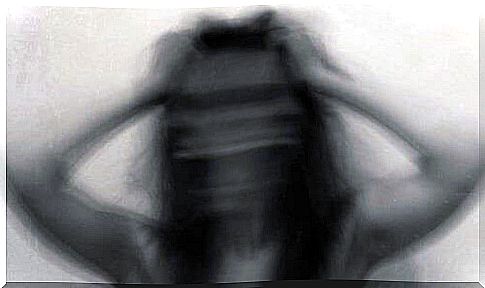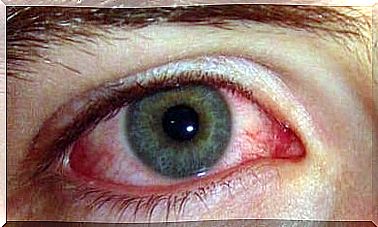Discover The Seven Most Common Types Of Anxiety

Psychologists distinguish various forms of fear. Fear is without a doubt a ferocious beast that makes many of us regularly beg for mercy.
When we talk about this dimension of psychology, we often think of only one problem. In reality, however, there are different degrees, origins and situations that contribute to the fear people experience.
Within the field of psychology, experts distinguish between seven different forms of anxiety.
First of all, we want to clarify that fear is a completely normal emotion. Normally, it triggers psychological mechanisms that actually help us. On the one hand, it helps us to deal with certain uncertain situations. On the other hand, it makes us put a little pressure on ourselves when the situation calls for it.
Often enough, however, our fears take over. In doing so, they cause our brains to initiate a series of processes with the result that we lose control completely.
In this case, it will certainly help to know a little more about the seven different forms of fear. Still, it’s important to remember that when you’re completely out of control and feeling totally helpless, you may need the help of a specialist. Realize that this is not uncommon. A large percentage of visits to medical specialists are anxiety related.
1. Generalized Anxiety Disorder

Generalized anxiety disorder is the most common form of anxiety. Millions of people suffer from it and we all experience that mental tension or nervousness that initially has no specific origin at all. This sense of fear makes us insecure and creates a disturbing sense of emptiness.
This form of anxiety can be triggered by several factors: a job interview, a presentation in front of a large group of people, a conflict, changes in your routine, trying something new…
However, it is not always caused by a particular situation. Generalized Anxiety Disorder can also have another cause: being constantly in a worried state.
These are some of the symptoms of generalized anxiety disorder:
- Continuous restlessness, irritability, nervousness, loss of control
- Fatigue, regular lack of energy
- Tense muscles, especially in the back, neck and shoulders
- You find it difficult to focus on certain tasks and activities
- Obsession with negative thoughts, doom-mongering
2. Social Phobia

In the case of the second type of fear we discuss in the series of fears, social conditions can cause constant discomfort, restlessness and worry.
This category includes people who don’t like to be in a room full of people, especially if they themselves have to speak in public for these people, have a debate or give a presentation. But it can also occur in simple situations where, for example, you want to return an item of clothing.
The symptoms of social phobia are:
- Feeling scared or helpless in front of strangers or situations where there are many people.
- Obsession with the feeling of being observed or judged.
- Cold sweats, stuttering, a heavy feeling in your stomach when you are introduced to a stranger or when you are in a situation where you have no control.
3. Panic Disorder

A panic disorder is one of the forms of anxiety that can severely limit the actions of those who suffer from it. This disorder causes moments when, for example, you are convinced that you will die, have a heart attack, have an accident, or that someone is after you.
Because you already know a bit more about anxiety and panic attacks, you are afraid of having to experience these types of attacks again.
Panic attacks are intense physical and mental sensations induced by stress. It may also be that there is no obvious cause at all, as strange as this may seem.
This is a very complex disorder, which can only be fully understood by one who has experienced it.
Some of the symptoms of this disorder include:
- Increased heart rate
- Excessive sweating
- Numbness and weakness
- The feeling of being outside your body
- Difficulty breathing
- Light-headedness or dizziness
- Chest or abdominal pain
- Difficulty with digestion
4. Agoraphobia
Almost everyone has heard of agoraphobia, the fear of large spaces, crossing the threshold of your own boundaries or entering an unfamiliar space.
We need to make it clear that agoraphobia doesn’t mean being too scared to leave the house. Most people who suffer from this phobia just go out, although they stick to their normal routes: from home to work, the supermarket, etc.
In addition, it is important to point out that agoraphobia is linked to panic disorder. When someone who suffers from this disorder is in a public place, it causes him to suffer from the symptoms that someone also experiences when he suffers from panic disorder.
5. Specific Phobias

In fact, almost all of us suffer from a certain phobia: the fear of spiders, clowns, loud noises, thunder, knives… These fears are normal and only become a problem when you become obsessed with them, to the point where it affects your quality of life. .
If your fear of spiders, rain and lightning, dog bites, etc. prevents you from going out, you can say that you suffer from a serious phobia.
The symptoms of these types of phobias are:
- Excessive and constant fear of something.
- An immediate sense of being threatened or being attacked.
- Unable to control your fear, despite knowing it’s irrational.
- Complete restriction on your normal routine.
6. Post Traumatic Stress Disorder

Unfortunately, in life you are never completely safe, just like you don’t always have to be protected, respected or loved.
Traumatic events leave traces. Accidents, fights and loss are events that can change you and hurt you from within.
The symptoms of post-traumatic stress disorder are:
- Reliving Trauma: The most common symptom of post-traumatic stress disorder is constantly reliving the same trauma. Often one trigger is enough to relive that unpleasant event from your past and all the pain that came with it.
- Recurring anxiety is also a factor. The trauma of the event may fade over time, but it has changed you in some way.
- Anxiety will persist in different ways in everyday situations: insomnia, fatigue, concentration problems, etc.
7. Obsessive Compulsive Disorder
Finally, obsessive-compulsive disorder, also known as obsessive-compulsive disorder, can also be a destructive anxiety disorder.
Outsiders can never understand why a person adheres to a whole series of rituals and repetitive actions. Still, it is important to know the difference between compulsions and obsessions as the two are not the same. Here are a few ways you can tell the two apart. It is worth knowing this.
Obsessions are concerns that focus on a specific (and almost always negative) thought that a person can’t let go of (someone is going to hurt or leave me).
Compulsions, on the other hand, are actions that a person performs in order to cope with his obsessions. For example: opening and closing the door five times to make yourself feel safer, washing your hands twenty times again to make sure you don’t get an infection.
Remember: we all suffer from one or more forms of anxiety from time to time
In conclusion, the types of anxiety we have discussed in this article are the main clinical categories that may require different treatments depending on their origin.
However, when the fear does not reach extreme heights, it is nothing more than a normal emotion that comes and goes. In this case, you just have to learn to handle it appropriately.









